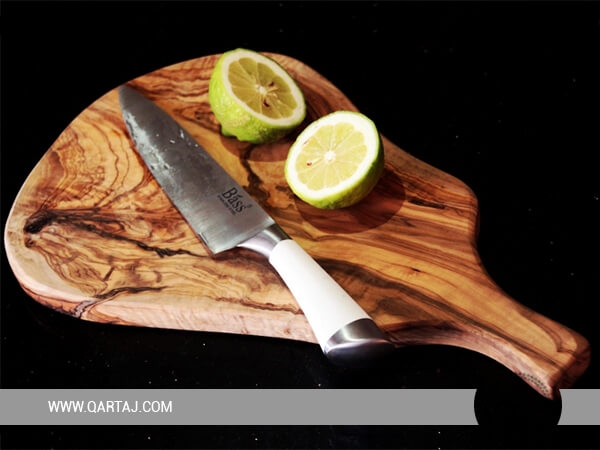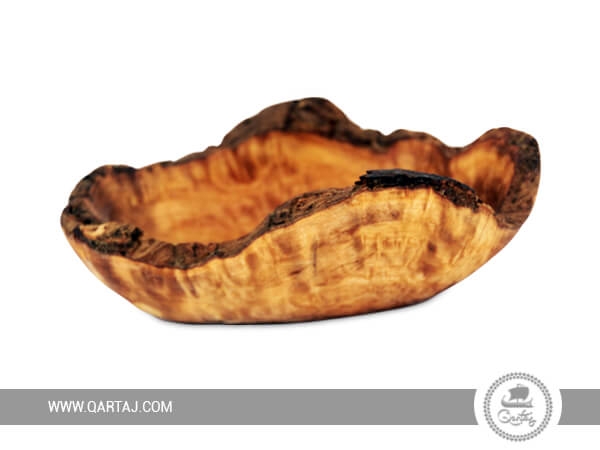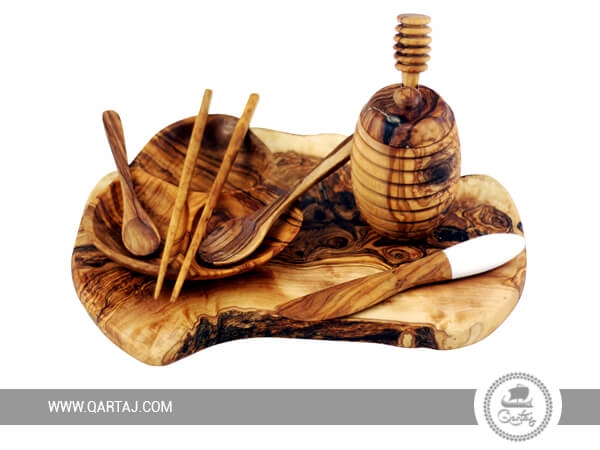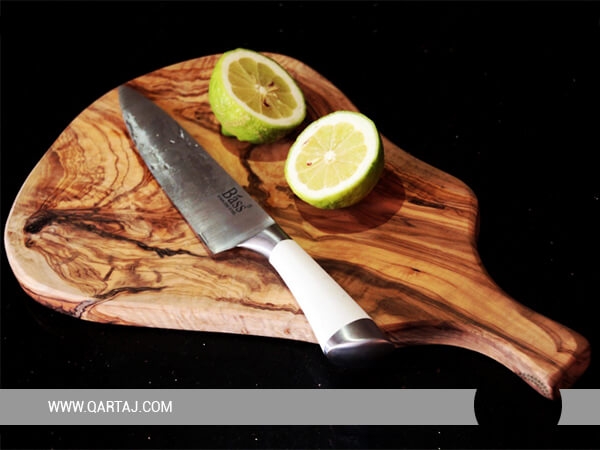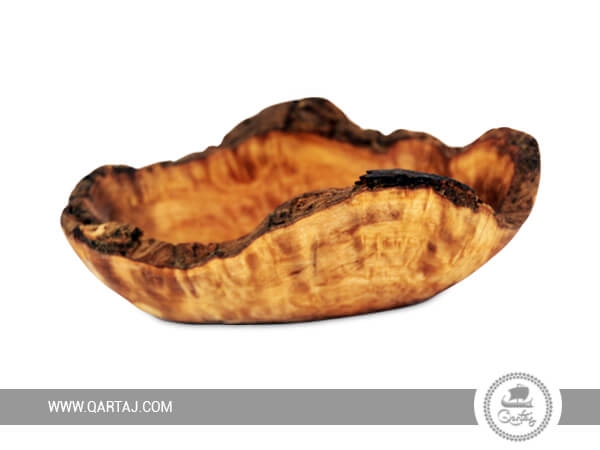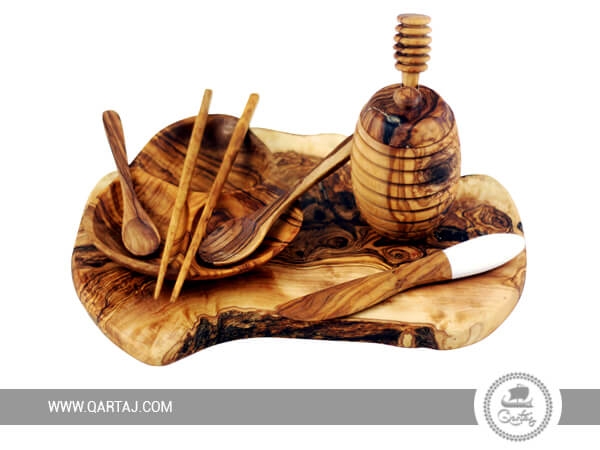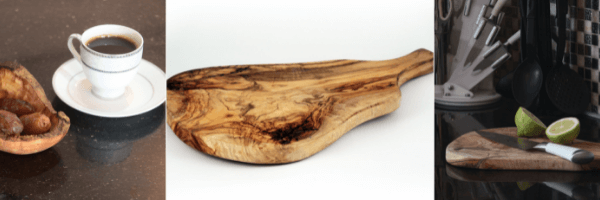
As you may have discovered, Qartaj is one of the largest wholesale vendors of Tunisian olive wood products. Tunisian artisans provide a wide range of olive wood products. The most important being cheese and cutting boards. Next are the exquisitely rustic bowls which are used as fruit bowls, salad bowls, or decorative objects. Qartaj and its artisans offer a very diverse range of utensils. You can find almost any utensil made out of olive wood here. We have different sizes and shapes of spatulas, ladles, spoons, forks, salad servers, and honey dippers. We have a large variety of other, sometimes hard to find objects such as olive wood plates, salt and pepper mills, coasters, bottle stoppers, cups… These serveware, dinnerware and kitchen utensils are a great alternative to plastic products in the kitchen as olive wood is very hard and durable and has antibacterial properties.
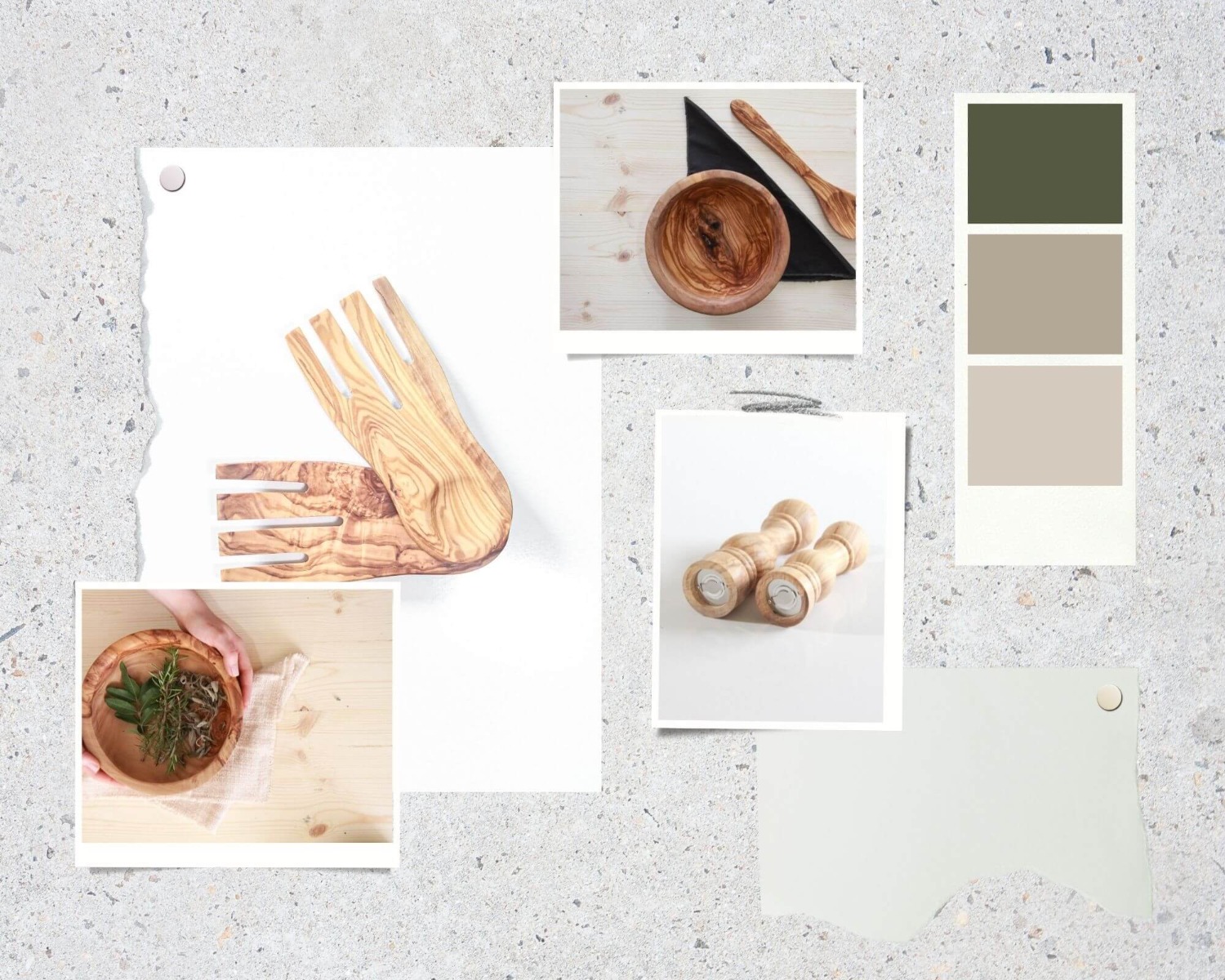
Olive tree is the most economically important oil-producing crop in many Mediterranean countries. Currently, about 90% of olive trees are grown in these countries, especially in Spain, Italy and Greece in the North and Tunisia in the South of the Mediterranean. The cultivation of olive trees has expanded into Australia, China, Latin America, South Africa and the USA (Hatzopoulos et al., 2002). Recently even the Rajahastan region of India has started planting the crop and its goal is to become one of the world's top producers of olives and oil.
Strong and sturdy, Olive wood comes from the Olive tree, one of the most symbolic trees in history. Olive trees were first cultivated over 7,000 years ago in the Mediterranean, and continue to flourish within the region and all over the world. The olive tree has been historically found in Tunisia from the 6th century BC. When the Romans arrived in North Africa, the Berbers knew how to graft wild olives and had really developed its cultivation throughout the territories they occupied. The olive tree made its way up from Tunisia to Southern Italian regions.
The olive tree has always held a special significance within Mediterranean culture and just as the tree itself, worldwide. In modern-day Greece, whenever a child is born, an olive tree is planted. The tree and child grow up together, and the tree becomes a symbol of evolution and continuity.
The olive tree and its branches are a vital symbol of peace. We all know the biblical symbol of a white dove holding an olive tree branch that came to Noah on its ark as a sign of peace and deliverance. Peace, calm, serenity—-a new start, a new creation, new expectations and new hope, they are what the olive tree symbolizes to many cultures and can be found Judaism, Christianity and Islam.

The facts about olive wood
In this article we won’t tell you about table olives or olive oil. If you want to find out more about the culinary uses of Tunisian olives, read it here and here.
https://qartaj.com/blog/olive-tree-economic-impact
https://qartaj.com/blog/opportunity-of-the-olive-oil-sector-in-tunisia
https://qartaj.com/blog/overview-of-the-olive-oil-sector-in-tunisia
We will focus on the wood from these ancient trees that have so many benefits and uses which we will list here.
What is olive wood used for
Olive wood is excellent for indoor use, and therefore it can easily be found in these kinds of objects:
- Indoor furniture (especially high-end)
- Turned objects
- Veneer
- Various small specialty wood items
- High-end knife or tool handles
- Art objects
- Small decorative items
- Carvings
- Flooring and paneling (in rare cases)
In Tunisia, as well as in countries such as Italy, Greece, Palestine and Spain, the handicrafts of olive wood are popular and widespread. They often hold a long time tradition of small workshops working with wood that comes straight from olive plantations.
Visually, wood olive trees are very famous all over the world for their homogeneous texture and grain. Besides, it is surprisingly rich and it has a beautiful colorful appearance.
Olive lumber is very strong, but it has a high sensitivity to outside elements and insect attacks. Because of this, it can most commonly be found only in indoor furniture and smaller wooden objects.
Since it has lower durability and resistance to elements and is not therefore used for mass production of flooring, paneling, and structural construction.
Olive wood is versatile and easy to work with, but even though it is hard and strong, it is not used for outdoor applications since it cannot survive in the open for long.
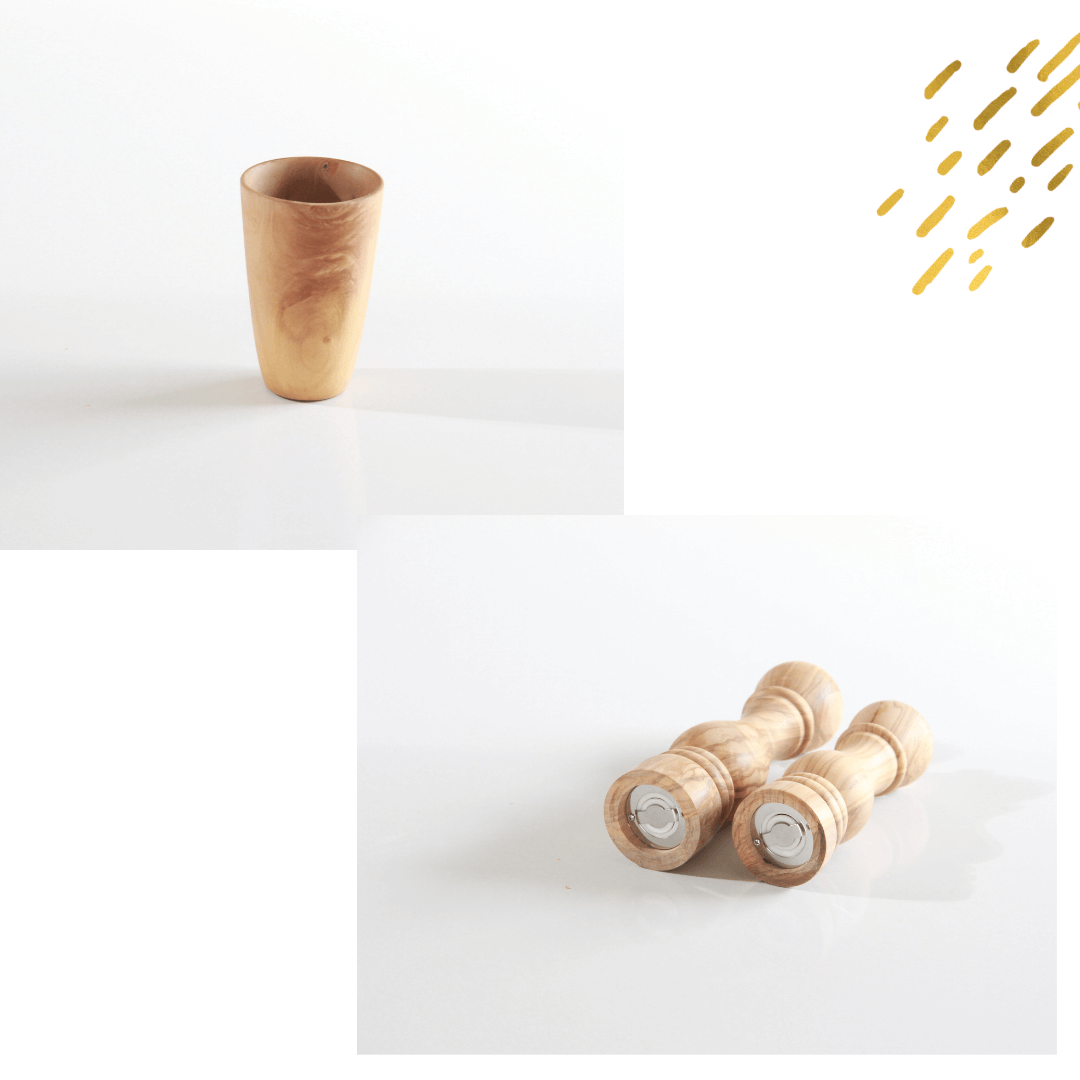
Olive wood is not only very beautiful, but it is also a truly sustainable resource. Although olive trees live for hundreds of years, they eventually stop producing olives and are then classed as ancient. Their trunks and branches become thick, gnarled, and twisted, and it is this wood that is used in the creation of beautiful wooden artifacts. The age of the tree helps to create the unique grain patterns that make these items so unique.

